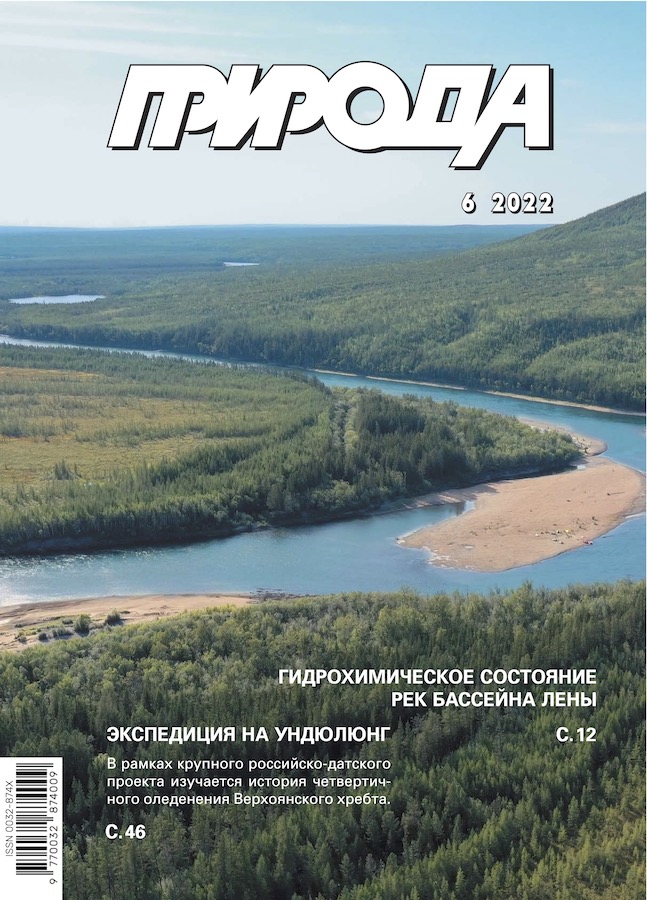Genetics of Ocean Fronts
- Authors: Stupnikova A.N1, Vasilyeva Y.V1, Mosharov S.A1
-
Affiliations:
- Shirshov Institute of Oceanology, RAS
- Issue: No 6 (2022)
- Pages: 41-45
- Section: Articles
- URL: https://journals.eco-vector.com/0032-874X/article/view/627687
- DOI: https://doi.org/10.7868/S0032874X22060047
- ID: 627687
Cite item
Abstract
Current systems in the World Ocean form fronts that divide water masses into frontal zones with different hydrological, physical, and chemical conditions. Water flows carry a variety of zooplankton organisms, creating for them both the necessary conditions for their existence and insurmountable barriers between neighboring water masses. We study zooplankton in the Drake Passage, a region of the Southern Ocean with a complex system of currents. Its waters are populated by eight common species of mesozooplankton. It turned out that seven of them inhabit both sides of the Polar Frontal Zone (PFZ), successfully overcoming the existing fronts. Individuals of these species do not differ significantly either morphologically or genetically on both sides of the front. However one species, Metridia lucens, stands apart from this list, as there are two genetically isolated but morphologically identical groups of this species on different sides of the PFR. Thus, genetic methods provide us opportunity to separate two populations of the one morphologically homogeneous species and to understand the mechanisms of separation of plankton species populations.
About the authors
A. N Stupnikova
Shirshov Institute of Oceanology, RASMoscow, Russia
Yu. V Vasilyeva
Shirshov Institute of Oceanology, RAS
Email: vasilyeva.ocean@gmail.com
Moscow, Russia
S. A Mosharov
Shirshov Institute of Oceanology, RASMoscow, Russia
References
- Longhurst A. Ecological Geography of the Sea. San Diego, 1998.
- Bradford-Grieve J.M. The marine fauna of New Zealand: Pelagic Calanoid Copepoda: Megacalanidae, Calanidae, Paracalanidae, Mecynoceridae, Eucalanidae, Spinocalanidae, Clausocalanidae. Gordon D.P. (ed.). Wellington, 1994.
- Bradford-Grieve J.M. The marine fauna of New Zealand: Pelagic Calanoid Copepoda: Bathypontiidae, Arietellidae, Augaptilidae, Heterorhabdidae, Lucicutiidae, Metridinidae, Phyllopodidae, Centropagidae, Pseudodiaptomidae, Temoridae, Candacidae, Pontellidae, Sulcanidae, Acartiidae, Tortanidae. Gordon D.P. (ed.) Wellington, 1999.
- Кулагин Д.Н., Ступникова А.Н., Неретина Т.В., Мюге Н.С. Генетическое разнообразие Eukrohnia hamata (Chaetognatha) в Южной Атлантике: анализ по гену mtСО1. Зоология беспозвоночных. 2011; 8(2): 127–136.
- Stupnikova A.N., Molodtsova T.N., Mugue N.S., Neretina T.V. Genetic variability of the Metridia lucens complex (Copepoda) in the Southern Ocean. Journal of Marine Systems. 2013; 128: 175–184. doi: 10.1016/j.jmarsys.2013.04.016.
- Kulagin D.N., Stupnikova A.N., Neretina T.V., Mugue N.S. Spatial genetic heterogeneity of the cosmopolitan chaetognath Eukrohnia hamata (Mobius, 1875) revealed by mitochondrial DNA. Hydrobiol. 2014; 721(1): 197–207. doi: 10.1007/s10750-013-1661-z.
- Белошапкин С.П., Гончарова Н.Г., Гриценко В.В. и др. Словарь-справочник энтомолога. М., 1992. 8. Яшнов В.А. Смена поколений и сезонные изменения в распределении возрастных стадий Calanus finmarchicus Баренцова моря. Труды ВНИРО. 1939; 4: 225–241.
- Marshall S.M., Orr A.P. On the biology of Calanus finmarchicus. XII. The phosphorus cycle: excretion, egg production, autolysis. J. Mar. Biol. Assoc. 1961; 41: 463–488.
- Conover R.J. Comparative life histories in the genera Calanus and Neocalanus in high latitudes of the northern hemisphere. Hydrobiol. 1988; 167/168: 127–142.
- Harris R.P., Irigoien X., Head R.N. et al. Feeding, growth, and reproduction in the genus Calanus. ICES Journal of Marine Science. 2000; 57(6): 1708–1726. doi: 10.1006/jmsc.2000.0959.
- Heath M.R. Winter distribution of Calanus finmarchicus in the Northeast Atlantic. ICES Journal of Marine Science. 2000; 57: 1628–1635.
- Раймонт Дж. Планктон и продуктивность океана. Т.2. Зоопланктон: В 2 ч. Ч.I. Незлин Н.П., Пелымского А.Г. (пер.); Чесунов А.В. (ред.). М., 1988: 544.
- Olbers D., Borowski D., Volker C., Wolff J. The dynamical balance, transport and circulation of the Antarctic Circumpolar Current. Antarct. Sci. 2004; 16(4): 439–470.
- Golivets S.V., Koshlyakov M.N. Synoptic eddies of the Subantarctic and Agulhas fronts and generation of the Antarctic intermediate water in the Atlantic ocean. Oceanology. 2009; 49(2): 151–165. doi: 10.1134/S0001437009020015.
- Turner J.T. The importance of small planktonic Copepods and their roles in pelagic marine food webs. Zoological Studies. 2004; 43(2): 255–266.
Supplementary files









